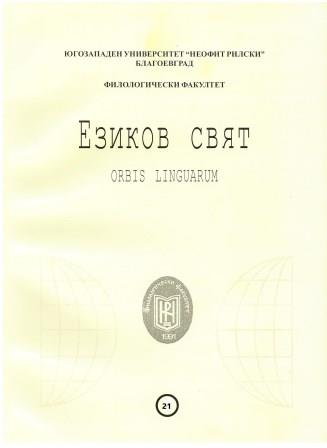THE BULGARIAN PAST FUTURE PERFECT AND ITS SLOVENE EQUIVALENTS: A CONTRASTIVE PERSPECTIVE
THE BULGARIAN PAST FUTURE PERFECT AND ITS SLOVENE EQUIVALENTS: A CONTRASTIVE PERSPECTIVE
Author(s): Robert GrošeljSubject(s): Language and Literature Studies, Theoretical Linguistics, Morphology, Comparative Linguistics
Published by: ЮГОЗАПАДЕН УНИВЕРСИТЕТ »НЕОФИТ РИЛСКИ«
Keywords: past future perfect; Bulgarian; Slovene equivalents; literal translation; contrastive analysis; temporality; relative temporality; modality
Summary/Abstract: The article identifies and analyses Slovene contrastive (linguistic-systemic) equivalents of the Bulgarian future perfect tense, an infrequently used verb form in contemporary Bulgarian, indicating an action/event posterior with regard to a past time reference point and anterior with regard to another (generally past) time point. The analysis is based on text examples with the past future perfect from various Bulgarian grammatical works and their literal Slovene translations. Slovene contrastive equivalents of the Bulgarian past future perfect include different verb forms (with different temporalmodal meanings), which depend partly on syntactic structures in which they appear: the Slovene conditional (pogojnik), the perfect (preteklik) and the future (prihodnjik) correspond to the Bulgarian past future perfect in simple sentences, as well as relative and causal dependent clauses; the conditional in main clauses modified by conditional clauses and the future in content dependent clauses. The Slovene conditional indicates the (non)realizability of an action/event, the perfect signals its (supposed) completion in the past-time sphere, to which the future adds a prospective view (when used with the function of “flashforward”); the future tense in content clauses signals posteriority in the past. The retrospective view can be either indicated explicitly by time expressions (sometimes found already in the source-text examples) or it can be contextually and co-textually inferred.
Journal: Езиков свят - Orbis Linguarum
- Issue Year: 21/2023
- Issue No: 2
- Page Range: 007-014
- Page Count: 8
- Language: English

